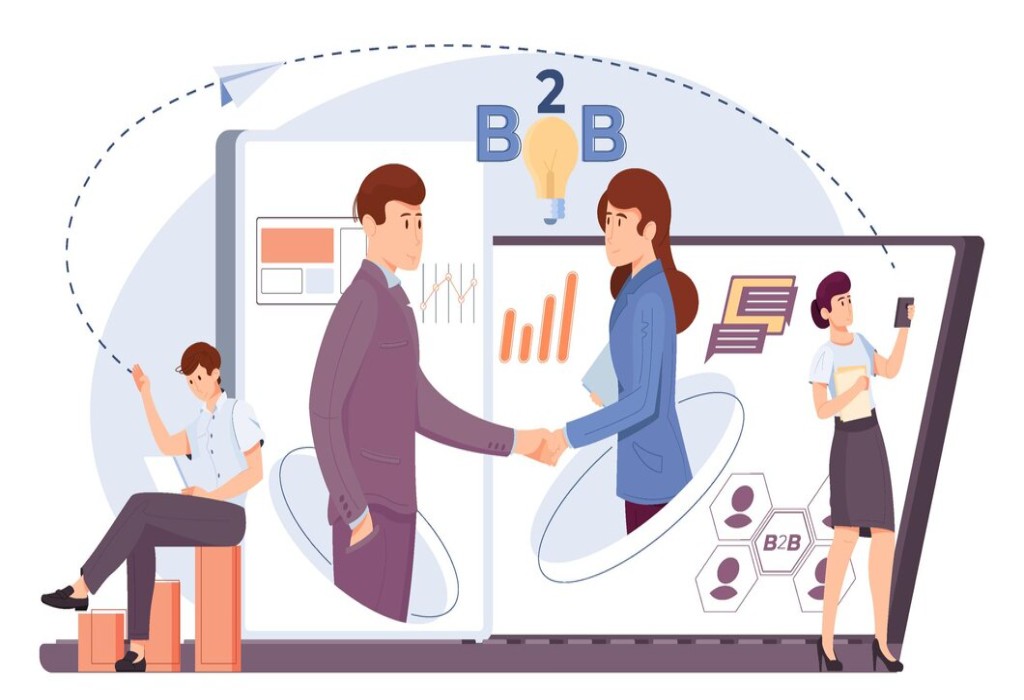Virtual events have become a staple for connecting professionals across the globe. However, the challenge lies in creating meaningful connections and fostering B2B relationships in a virtual setting. B2B networking sessions are crucial components of these events, providing a platform for businesses to engage, collaborate, and build partnerships. In this article, we will explore comprehensive strategies and practical tips on how to effectively run B2B networking sessions at your next virtual event.
What is B2B Networking Session?
A B2B networking session refers to a dedicated event or platform where businesses and professionals gather to establish meaningful connections, share industry insights, explore collaboration opportunities, and build mutually beneficial relationships. These sessions typically involve structured networking activities such as one-on-one meetings, group discussions, workshops, and seminars focused on addressing specific business challenges or opportunities. B2B networking sessions provide a valuable opportunity for companies to expand their professional network, exchange knowledge, discover new business leads, and foster partnerships that can lead to growth and success in their respective industries.
Importance of B2B Networking Sessions
B2B networking sessions play a pivotal role in the business landscape, serving as dynamic platforms for professionals and organizations to connect, collaborate, and cultivate valuable relationships. These sessions hold immense importance as they provide opportunities for knowledge exchange, foster industry-wide collaborations, and facilitate the exploration of potential partnerships.

B2B networking is not merely a transactional exchange but a strategic imperative, enabling businesses to stay abreast of industry trends, share insights, and discover new avenues for growth. By fostering a collaborative environment, B2B networking sessions contribute to the collective advancement of industries, sparking innovation and creating a network of interconnected professionals that drive success and mutual benefit.
Here’s How to Run B2B Networking Sessions At Virtual Events
1.Choose the Right Virtual Networking Platform
Selecting the appropriate virtual networking platform is pivotal to the success of your B2B networking sessions. Look for platforms that offer features such as private meeting rooms, matchmaking algorithms, and interactive tools to facilitate seamless interactions. Prioritize user-friendly platforms that enhance engagement and connection-building. Thanks to MindMixer for offering all the desired features and the best functionality to become the best event networking platform for businesses.
2.Define Clear Objectives for B2B Networking Sessions
Before launching your virtual event, establish clear objectives for the B2B networking sessions. Consider whether the primary goal is lead generation, partnership building, knowledge exchange, or a combination of these. Clearly defined objectives guide the structure of your networking sessions and help participants understand the value they can derive from the event.

3. Segment Participants for Targeted Networking
Segmentation is a powerful tool in virtual B2B networking. Categorize participants based on industry, interests, or goals to facilitate more targeted connections. This segmentation allows attendees to connect with like-minded professionals, increasing the likelihood of meaningful interactions and collaborations.
Read on to learn more about: “How to increase sponsorship opportunities for a networking event”.
4.Facilitate Pre-event Networking Opportunities
Encourage pre-event networking by providing attendees with access to participant lists or forums where they can introduce themselves and express their objectives for the event. This early engagement sets the stage for more purposeful interactions during the virtual event, as participants enter with a sense of familiarity.
5.Incorporate Icebreakers and Interactive Elements
Combat virtual event fatigue by incorporating icebreakers and interactive elements into your B2B networking sessions. Consider hosting short, engaging activities that encourage participants to share insights, experiences, or challenges. These activities create a positive and collaborative atmosphere, breaking the ice for more substantial conversations.
6.Utilize Matchmaking Algorithms
Employing matchmaking algorithms enhances the efficiency of virtual B2B networking. These algorithms analyze participant profiles, preferences, and objectives to suggest relevant connections. By leveraging technology, you streamline the networking process, ensuring that participants connect with those most aligned with their goals.
7. Host Themed Networking Sessions

Inject creativity into your virtual B2B networking sessions by hosting themed events. Themed sessions provide a unique and enjoyable framework for interactions, making the networking experience memorable. Whether it’s a virtual happy hour, a roundtable discussion, or a speed networking session, themes add an element of excitement and differentiation.
8. Provide Opportunities for One-on-One Meetings
While group networking sessions are valuable, one-on-one meetings allow for more in-depth discussions and relationship-building. Allocate time slots for participants to schedule private meetings with potential collaborators or clients. This personalized approach enhances the quality of connections formed during the event.
9. Encourage Information Sharing
Facilitate information sharing by creating platforms where participants can showcase their products, services, or expertise. Virtual showcases or virtual booths allow businesses to present their offerings, providing a visual and interactive element to the networking sessions. This not only enhances engagement but also facilitates informed discussions between participants.
10. Offer Educational Workshops
Integrate educational content and workshops into your B2B networking sessions. This adds value to participants by providing insights into industry trends, challenges, and best practices. Educational components not only attract a diverse audience but also create opportunities for knowledge exchange and collaboration.
11. Enable Post-event Networking Opportunities
Extend the networking opportunities beyond the event by facilitating post-event connections. Provide access to recorded sessions, discussion forums, and follow-up resources to keep the conversation alive. Encourage participants to continue networking and collaborating even after the virtual event concludes.
12. Collect and Analyze Feedback
Gathering feedback is crucial for refining your approach to virtual B2B networking. Use surveys and feedback forms to collect insights from participants about their experiences. Analyze the data to understand what worked well and areas for improvement, allowing you to continually enhance the effectiveness of future networking sessions.
When it comes to analysis, there are also key metrics you can track that help measure the performance of your event networking.
13. Promote Networking Etiquette
Establish and promote a code of networking etiquette to create a professional and respectful environment. Encourage participants to be punctual for meetings, actively participate in discussions, and exchange contact information appropriately. A positive and respectful atmosphere contributes to the success of virtual B2B networking sessions.
Strategies to Foster Long-Term Relationships Post-Event
While successful virtual B2B networking events provide immediate opportunities for connections, the real value lies in cultivating and sustaining long-term relationships post-event. Building lasting connections requires a thoughtful and strategic approach, ensuring that the initial engagement evolves into a mutually beneficial, ongoing relationship. Here are key strategies to foster long-term relationships post-event:
1. Timely and Personalized Follow-ups
The period immediately following the virtual event is crucial for cementing connections. Send personalized follow-up messages expressing gratitude for the interaction, referencing specific points from the conversation, and reiterating your interest in staying connected. Timeliness and personalization demonstrate your commitment to building a meaningful relationship.
2. Continued Engagement on Social Media

Extend the connection by maintaining an active presence on social media platforms. Engage with your new contacts by sharing relevant content, participating in industry discussions, and responding to their posts. Social media provides a dynamic environment for ongoing interaction and relationship-building.
3. Schedule Post-Event One-on-One Meetings
Continue the conversation by scheduling one-on-one virtual meetings with key contacts. Use this time to delve deeper into potential collaborations, address specific challenges, and explore ways to support each other’s goals. These personalized interactions strengthen the bond formed during the event.
4. Participation in Industry Events and Webinars
Maintain visibility by actively participating in industry events and webinars, both as an attendee and a speaker. This ongoing engagement reinforces your commitment to the industry and provides opportunities to reconnect with contacts from the virtual event in a different context.
5. Establishing a Mutual Support Network
Cultivate a culture of mutual support by consistently offering assistance and sharing resources with your connections. Actively seek opportunities to contribute to their success, whether through introductions to valuable contacts, sharing relevant industry insights, or offering your expertise.
6. Organize Informal Networking Opportunities
Create opportunities for informal networking beyond structured events. Host virtual coffee chats, happy hours, or themed networking sessions to maintain a relaxed and friendly environment for ongoing interactions. These informal gatherings contribute to relationship-building in a more casual setting.

7. Seek Feedback and Continuous Improvement
Demonstrate your commitment to the growth of the relationship by seeking feedback on your interactions and expressing a willingness to adapt based on their preferences. Continuous improvement based on constructive feedback reinforces your dedication to fostering long-term, mutually beneficial connections.
In the Nutshell
Running successful B2B networking sessions in a virtual environment requires strategic planning, technological prowess, and a commitment to fostering meaningful connections. By understanding the dynamics of virtual interactions, choosing the right platform, and implementing targeted strategies, you can create a virtual event that facilitates valuable B2B relationships.
FAQs
Ans: Consider factors such as the platform’s user interface, features like matchmaking algorithms and private meeting rooms, scalability, and the ability to integrate interactive elements. Choose a platform that aligns with your event goals and enhances participant engagement.
Ans: Clearly define your objectives, which could include lead generation, partnership building, knowledge exchange, or a combination. Having well-defined goals guides the structure of your networking sessions and helps participants understand the value they can gain.
Ans: Provide access to participant lists or forums before the event where attendees can introduce themselves and express their objectives. Creating a space for early engagement helps participants enter the event with a sense of familiarity and purpose.
Ans: Choose a virtual event platform with robust security measures and communicate these measures to participants. Brands and businesses are leaving their trust in MindMixer to make their networking event secure and successful.
Ans: Incorporate live Q&A sessions during networking events to allow participants to interact directly with speakers or industry experts. Live Q&A sessions foster real-time engagement, provide valuable insights, and encourage active contributions to discussions.






